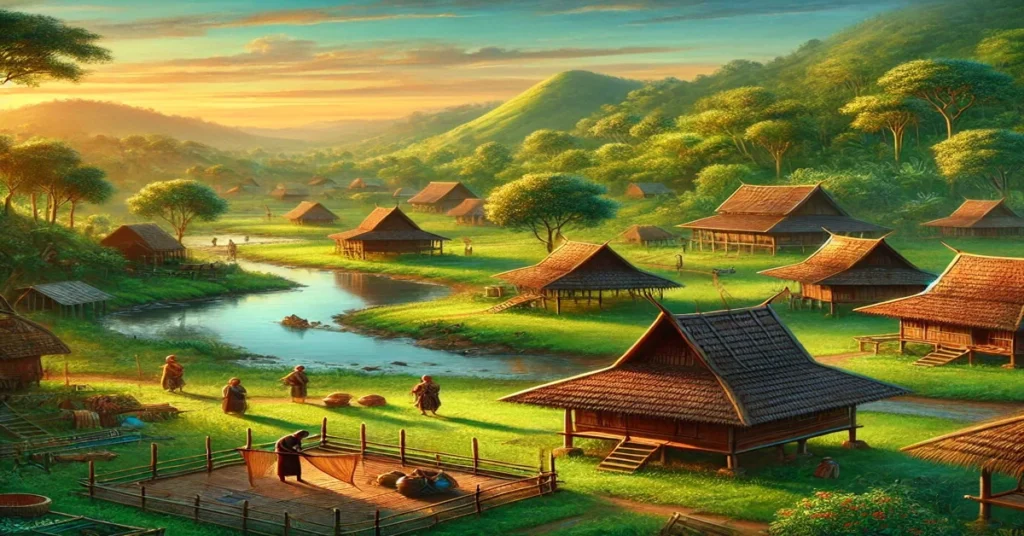The story of the Ciulioneros is one of cultural richness, historical significance, and unwavering resilience. This community, steeped in deep-rooted traditions and customs, has managed to preserve its identity over centuries, despite the numerous external pressures it has faced. From colonization to the forces of modernization, the Ciulioneros have remained steadfast in their dedication to safeguarding their heritage. This article delves into the fascinating journey of the Ciulioneros, exploring their historical origins, the cultural practices that define them, their encounters with external influences, and the challenges they continue to face in the modern world.
Understanding the Origins of the Ciulioneros
The Ciulioneros are a distinct cultural group whose history stretches back centuries. Originating in a specific region known for its rich natural resources and strategic importance, the Ciulioneros developed a unique way of life that was closely tied to their environment. Their customs, rituals, and social structures evolved in harmony with the land they inhabited, reflecting a deep connection to nature.
Early records and oral traditions suggest that the Ciulioneros were once a community that thrived through agricultural practices, fishing, and trade. These activities not only provided sustenance but also became central to their cultural identity. The Ciulioneros’ close relationship with their environment is evident in their traditional festivals, where the change of seasons, harvests, and natural phenomena are celebrated with songs, dances, and elaborate ceremonies. These celebrations are more than mere rituals; they are a reaffirmation of the Ciulioneros’ bond with the earth and their commitment to maintaining harmony with nature.
The Impact of Colonization on the Ciulioneros
One of the most challenging periods in the history of the Ciulioneros was the era of colonization. Like many indigenous and traditional communities, the Ciulioneros faced attempts by colonial powers to undermine their cultural practices and impose new ways of life. Colonization brought with it new religions, languages, and social structures that sought to replace the existing traditions of the Ciulioneros.
This period was marked by forced assimilation, loss of land, and the suppression of traditional practices. Many were compelled to adopt the language and customs of their colonizers, while their own beliefs and rituals were often dismissed as primitive or superstitious. However, despite these pressures, the Ciulioneros displayed remarkable resilience. They found ways to preserve their cultural identity by practicing their traditions in secret and passing down knowledge through oral storytelling, music, and clandestine gatherings.
The Ciulioneros’ ability to adapt without losing their core values was crucial during this time. They absorbed certain elements from the colonizers—such as new tools and trade practices—while retaining their distinct cultural essence. This period of struggle and adaptation laid the foundation for the Ciulioneros’ reputation as a community that could endure adversity without losing its sense of self.
Cultural Practices and Traditions of the Ciulioneros
The Ciulioneros are known for their rich cultural heritage, which encompasses a wide range of traditional ceremonies, rituals, and art forms. These practices are not merely customs; they are expressions of the community’s identity and a means of maintaining continuity with their ancestors.
1. Traditional Ceremonies and Rituals
Central to the cultural life of the Ciulioneros are their traditional ceremonies, which mark significant events in the agricultural cycle, life stages, and spiritual beliefs. For example, harvest festivals are celebrated with great fervor, involving community gatherings where songs and dances are performed to thank the earth for its bounty. These ceremonies are often accompanied by the preparation of special foods, which are shared among community members as a symbol of unity and gratitude.
Rituals related to birth, marriage, and death are also important in this culture. These life events are seen as part of a larger spiritual journey, and each is marked with specific practices that honor the individual and their place within the community. Traditional healers play a key role in these rituals, using herbal remedies, chants, and spiritual guidance to connect with the ancestors and seek their blessings.
2. Language and Oral Traditions
Language is a vital aspect of Ciulioneros culture. It is through their native language that they convey the stories, songs, and wisdom of their ancestors. Oral storytelling is a revered art among the Ciulionero, with elders often gathering younger generations to share tales of heroism, moral lessons, and the history of their people. These stories are more than entertainment; they are a means of preserving the collective memory and identity of the Ciulionero.
Efforts to preserve their language have been a major focus for the Ciulioneros, especially as globalization and modernization have brought external languages into their daily lives. Today, many Ciulionero take pride in teaching their children the traditional language, ensuring that it remains a living part of their cultural identity.
3. Music, Dance, and Art
The arts play a significant role in the cultural expression of the Ciulioneros. Music and dance are integral to their ceremonies and celebrations, often serving as a means of expressing joy, sorrow, and reverence. Traditional instruments, such as drums and flutes, accompany dances that mimic the rhythms of nature—such as the flowing of rivers or the swaying of trees. These performances are not only a form of cultural preservation but also a way of connecting with the spiritual world.
Visual art is another important aspect of this culture. Their art often depicts scenes from nature, mythology, and daily life, using materials sourced from their surroundings. Artisans among the Ciulionero are known for their craftsmanship, creating intricate textiles, pottery, and jewelry that are both functional and symbolic. These art forms are passed down through generations, ensuring that traditional techniques and designs are preserved.
The Ciulioneros and Their Interactions with Other Cultures
Throughout history, the Ciulioneros have interacted with various other communities, including neighboring tribes, traders, and colonizers. These interactions have had a significant impact on their culture, introducing new elements that have been blended with their traditional practices. Unlike many communities that have resisted outside influences entirely, the Ciulionero have mastered the art of cultural synthesis—the ability to integrate external influences while maintaining their core identity.
For example, they adopted certain agricultural techniques and tools introduced by traders, which helped improve their productivity. Similarly, their music and dance have incorporated instruments and styles from neighboring cultures, creating a vibrant fusion that is unique to the Ciulionero. This adaptability has been one of the Ciulionero’ greatest strengths, allowing them to evolve while staying true to their heritage.
Modern-Day Challenges Facing the Ciulioneros
Despite their resilience, they face several challenges in the modern world. Globalization, urbanization, and the spread of digital media have brought new pressures that threaten to erode traditional ways of life. Younger generations are increasingly drawn to the conveniences and opportunities offered by modern society, leading to a decline in traditional practices and a loss of cultural knowledge.
Economic challenges also play a significant role. Many live in rural areas where opportunities for economic advancement are limited. As a result, some community members are forced to migrate to urban centers in search of better prospects, leaving behind their traditional lands and lifestyles. This migration can lead to a disconnection from cultural roots, as younger Ciulionero may find it difficult to maintain their customs while adapting to city life.
Environmental changes pose another challenge. Climate change and deforestation have affected the natural resources that they rely on for their livelihoods and cultural practices. The loss of forests and changes in weather patterns have disrupted agricultural cycles and traditional healing practices that depend on native plants.
Efforts to Preserve Ciulioneros Culture
In response to these challenges, they have taken proactive steps to preserve their culture and ensure that their traditions are passed down to future generations. Community leaders have organized cultural festivals that celebrate Ciulioneros heritage, inviting both members of their own community and outsiders to learn about their history, music, dance, and art. These events serve as a platform for cultural pride and help to educate younger Ciulioneros about their heritage.
Educational programs have also been established to teach the Ciulionero language and traditional skills. These programs aim to instill a sense of pride in cultural identity among the youth and equip them with the knowledge needed to keep their traditions alive. By integrating traditional teachings with modern education, the Ciulioneros hope to create a generation that is both culturally grounded and capable of navigating the modern world.
Collaborations with NGOs and cultural preservation organizations have further supported the Ciulionero efforts. These partnerships have provided resources for documenting traditional knowledge, developing sustainable agricultural practices, and promoting the Ciulionero’ crafts in global markets. Through these efforts, they have found new ways to sustain their way of life while adapting to the challenges of the 21st century.
The Future of the Ciulioneros: Balancing Tradition and Modernity
The future of the Ciulioneros lies in their ability to balance tradition and modernity. While they continue to face challenges, the Ciulionero’ resilience and commitment to their heritage provide hope for the preservation of their culture. By embracing new opportunities while holding on to their core values, the Ciulionero can carve out a path that honors their past while looking toward the future.
As the world becomes increasingly interconnected, there is also a growing appreciation for the value of cultural diversity. The Ciulionero have the potential to share their rich traditions with the global community, contributing to the broader tapestry of human culture. By remaining true to their identity and finding innovative ways to adapt, the Ciulioner can continue to thrive for generations to come.
FAQs About Ciulioneros
1. Who are the Ciulioneros?
The Ciulioneros are a cultural group known for their deep-rooted traditions and resilience. They have preserved their unique identity and customs over centuries, despite facing challenges such as colonization and modernization.
2. What are some key traditions of the Ciulioneros?
The Ciulioneros are known for their traditional ceremonies, rituals, music, dance, and art forms. These practices are central to their cultural identity and reflect their connection to nature and spiritual beliefs.
3. How did colonization impact the Ciulioneros?
Colonization brought significant challenges to the Ciulioneros, including attempts to suppress their language, rituals, and social structures. Despite these pressures, the Ciulioneros managed to preserve their traditions through secret practices and adaptation.
4. What challenges do the Ciulioneros face today?
The Ciulioneros face challenges such as globalization, urbanization, environmental changes, and economic pressures. These factors threaten to erode traditional practices and disconnect younger generations from their cultural roots.
5. How are the Ciulioneros preserving their culture?
The Ciulioneros are preserving their culture through cultural festivals, educational programs, and partnerships with NGOs. These efforts focus on teaching the younger generation about their heritage and promoting traditional skills and knowledge.
6. What is the significance of language for the Ciulioneros?
Language is a vital part of Ciulioneros culture, serving as a medium for storytelling, passing down traditions, and maintaining a connection with their ancestors. Efforts to preserve their native language are central to maintaining their cultural identity.







